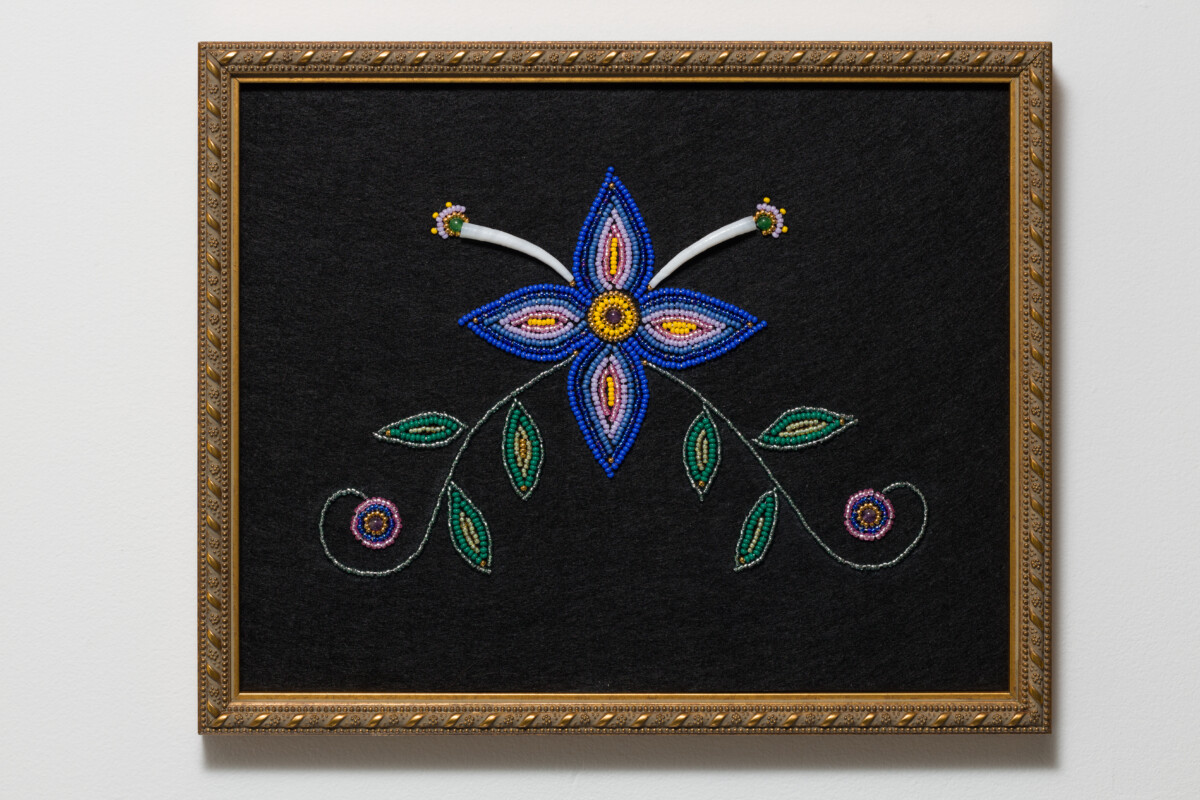Juliet Mackie paints motherly love and female power in her latest artwork.
Shé:kon Gallery is currently hosting Matrilineal Memory, an exhibition showcasing the work of Juliet Mackie. She is a visual artist from Métis origins, currently residing in Montreal. Through her beadings and paintings, she embraces her heritage and pays tribute to the women of her lineage.
Mackie is a PhD candidate in the iIndividualized iProgram at Concordia University as well as a holder of a BFA in painting and drawing. The exhibition’s curator, Alexandra Nordstrom, is a PhD student in the inter-university doctoral program in art history at Concordia University. Nordstrom and Mackie have previously collaborated on another exhibition, Braiding our Stories, at VAV Gallery.
Matrilineal Memory is hosted at Shé:kon Gallery, which belongs to the Contemporary Native Art Biennial (BACA). BACA is a non-profit organization launched in 2012 which promotes Indigenous artists’ artwork. The Gallery was opened in 2021 and is in function all year-round, and is described as a “space dedicated to emerging Indigenous artists and curators from Quebec.”
Starting with her great-great-great-grandmother and ending with her mother, Mackie has recounted the lives of her female ancestors. The women in the portrait collection share unequivocal family resemblances, such as dark hair and large brown eyes, as well as beadings of floral figures, which both represent Mackie’s connection to nature and embody femininity.
The portraits and beadings are vividly colourful. In the paintings, some women are pictured in traditional Indigenous clothing, whereas others are painted wearing dresses and pearls. There is a family portrait called Trapline Girls where a woman wearing furs is seen smiling accompanied by three children, presumably girls, which might be the representation of tradition being passed down from generation to generation.
Another painting, Granny Oak, shows an elderly woman holding a young girl in her arms, surrounded by pink flowers. This portrait particularly exudes maternal love and feminine energy. The background of some paintings includes flowers, trees and eagles—yet another reminder of the artist’s love of nature as well as the Métis’ connection to fauna and flora.
The artist’s great-grandmother, Evelyn Oak, is a central figure of the display. She was a Métis woman from the community of Fort Chipewyan, in Alberta. She, as well as her daughter Greta, inspired the artist through their journey of self-acceptance, resilience and courage as Indigenous women during the 20th century. As she embraces her family history, Mackie also embraces her own identity, reconnects with her origins, and celebrates tradition. Unapologetically feminist, Matrilineal Memory is an intimate encounter between the artist and the women who shaped her way of being.
Matrilineal Memory will be on view until Dec. 22.
